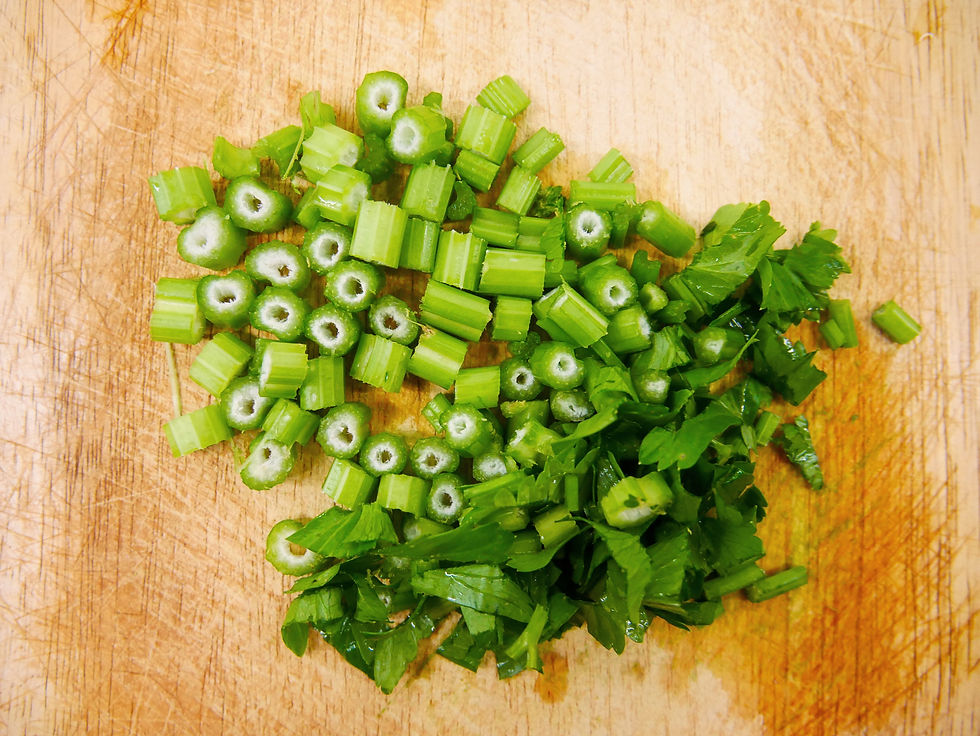Food as Medicine: Stir-Fried Celery and Fresh Lily Bulb
- Bethesda Acupuncture

- Sep 21, 2023
- 2 min read
Updated: Apr 5

Fall is the best time to harvest fresh lily bulbs. Lily bulb has long been used in Chinese medicine for its soothing and clarifying effects. Traditionally, lily bulbs have been taken as a way to moisten the lungs to help treat dry coughs and sore throats. Lily bulbs have also been used to treat low grade fever, improve sleep quality, and alleviate GI issues.
Lily bulbs are rich in calcium, iron, phosphorus, and vitamins B1, B2, and C, making them a great ingredient to include in one's diet. Apart from their impressive nutritional profile, they also provide a variety of positive health effects.
Lily bulb's positive health effects include:
Improved immune system function through the inhibition of tumor cell growth in the body
Removing harmful free radicals from the body, as lily bulbs are a strong source of natural antioxidants
Lower blood glucose levels through the increase of the body's secretion of insulin
With fall just around the corner, please see our Stir-Fried Celery and Lily Bulb recipe below to see how you can begin incorporating this versatile ingredient into your diet!
Stir-Fried Celery and Lily Bulb
Ingredients:
8 large stalks of celery
2 fresh lily bulbs
2 teaspoons avocado oil
Sea salt and white pepper to taste
1/2 cup of bone broth
Directions:
Gently break up the lily bulb into individual petals.
Blanch the lily bulb scales in boiling water for 10 seconds then transfer into a colander. Rinse with cold water to cool and drain.
Wash, rinse, and trim celery. Cut celery into thin bite-size pieces.
Heat a large pan to high heat until hot. Add avocado oil to the pan.
When the oil starts to shimmer, add the sliced celery and lily bulb petals.
Stir fry and mix for 2-3 minutes, while adding in bone broth, white pepper and salt to taste.
Serve hot and enjoy!
References:
Wang, P., Li, J., Attia, F., Kang, W., Wei, J., Liu, Z., & Li, C. (2019). A critical review on chemical constituents and pharmacological effects of Lilium. Food Science and Human Wellness, 8(8), 330-336. ScienceDirect. https://doi.org/10.1016/j.fshw.2019.09.001.
Zaccai M, Yarmolinsky L, Khalfin B, Budovsky A, Gorelick J, Dahan A, Ben-Shabat S. Medicinal Properties of Lilium candidum L. and Its Phytochemicals. Plants (Basel). 2020 Jul 29;9(8):959. doi: 10.3390/plants9080959. PMID: 32751398; PMCID: PMC7465089.
This website provides general information only. Content does not constitute medical advice. Consult a healthcare professional for medical guidance.
